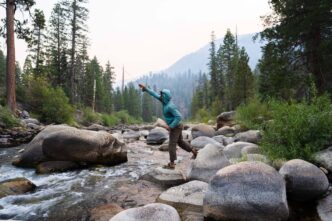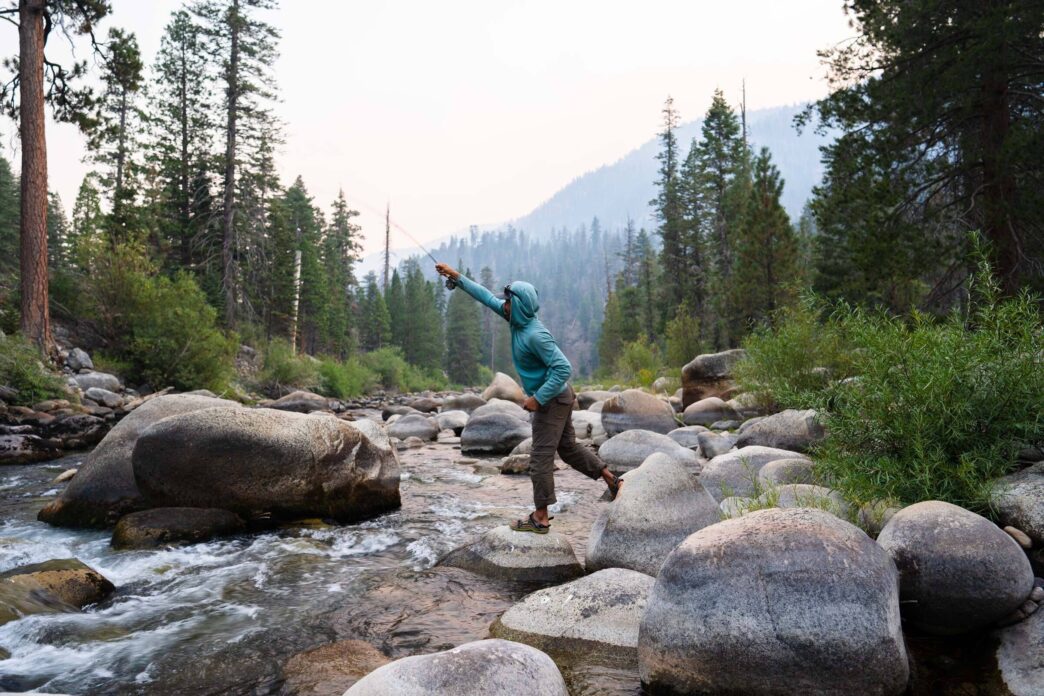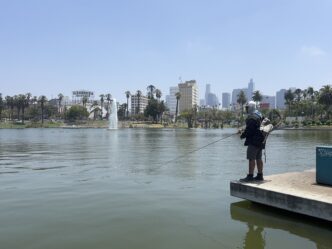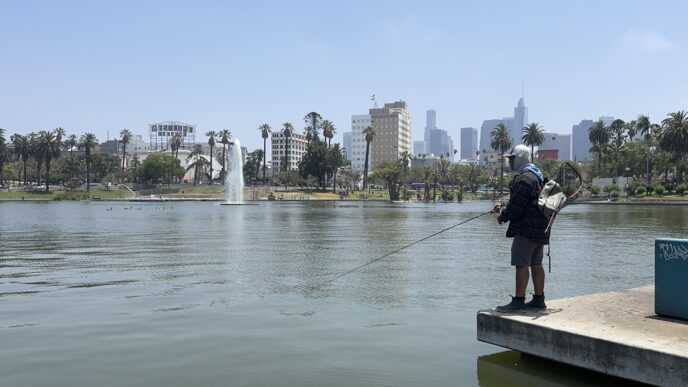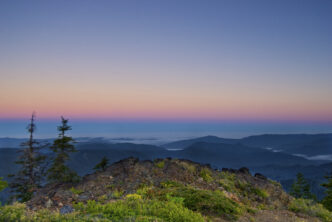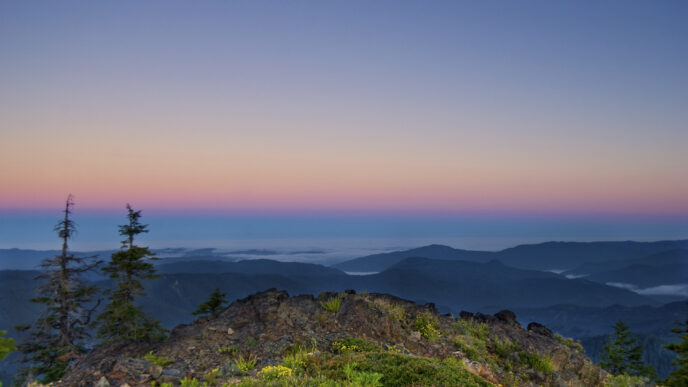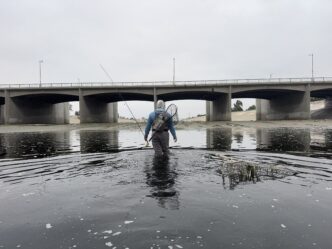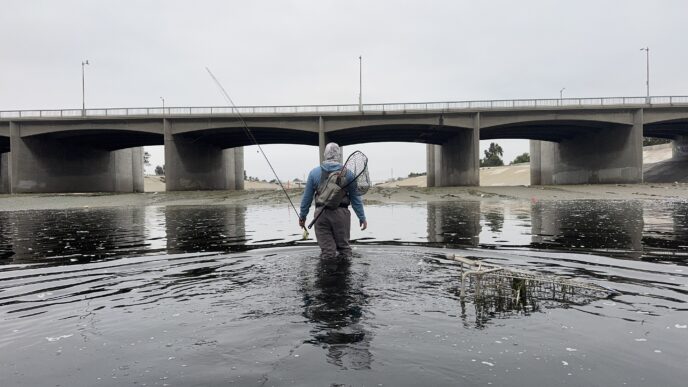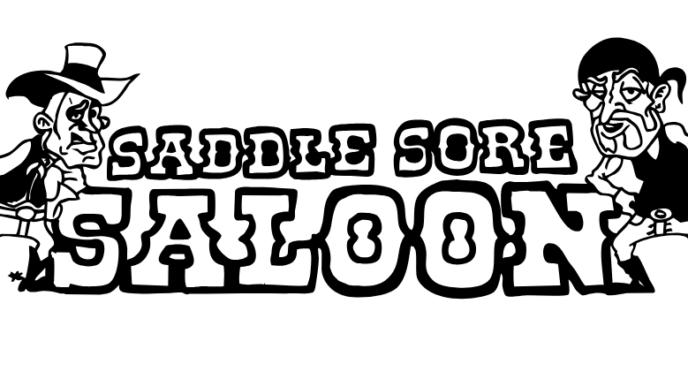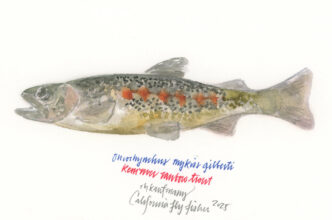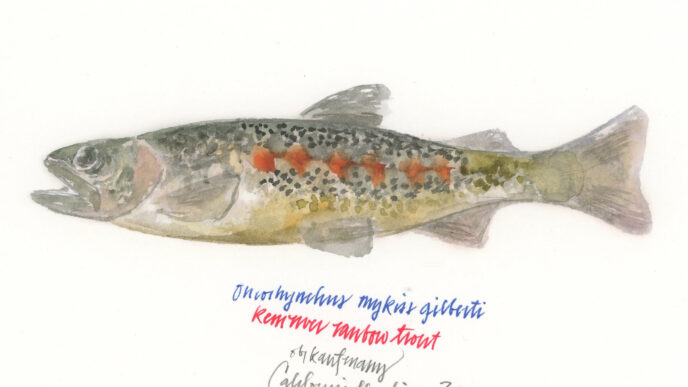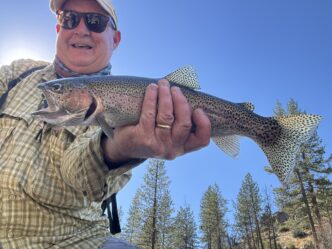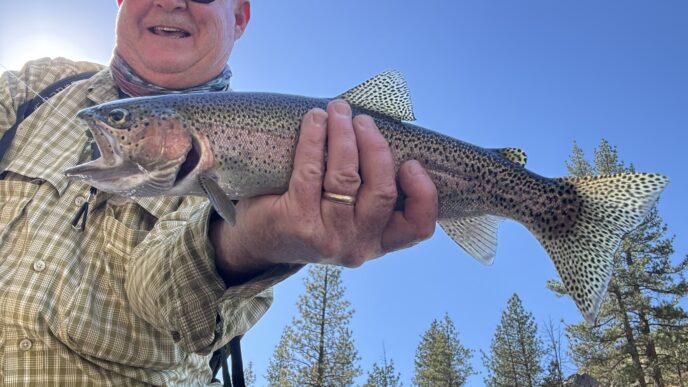I’m in a 25+ year love affair. She’s wild and she’s fun. But she’s fickle.
From mid-November to mid-July, she is mostly nasty and dangerous. But even though she is a raging torrent of death in this long stretch, I daydream about her every day. Come August, I want to see her every day for over three straight months until she gets mean again. Every decade or so, she is on fire like the mythical goddess Pele. After the fires, I have to wait two years to see her. She’s also hard to get to. You can’t drive to her. You have to earn the privilege to see her by carrying over 35 pounds on your back and hiking for miles.
I’m talking about the wild section of the Upper Kern River in the Golden Trout Wilderness of California’s Sierra Nevada Mountain Range.
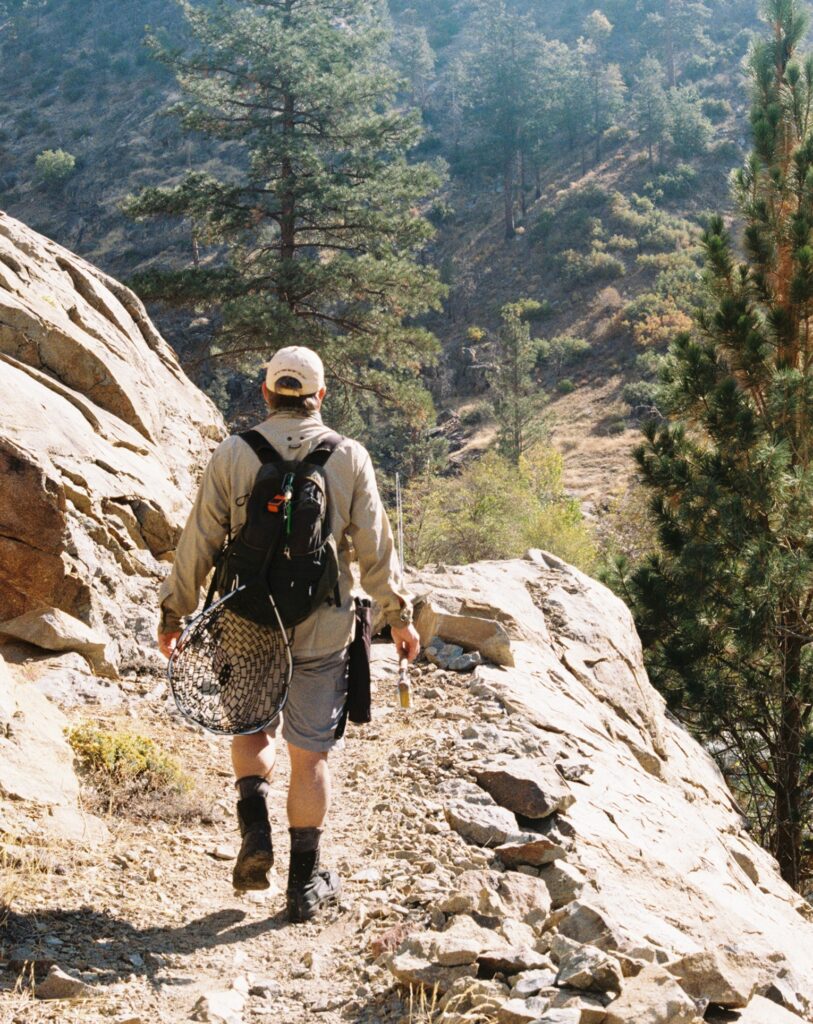
ABOUT THE KERN RIVER
The North Fork of the Kern River (often called “Main Fork”) has a total length of 165 miles. It drains Mount Whitney, which at 14,505 feet is the tallest mountain in the contiguous United States. With its headwaters at Lake South America, the Kern is the only major river in the Sierra Nevada that flows south. The Kern cuts along the Great Western Divide, flowing into Lake Isabella in Kernville, where the South Fork joins, then continues on to the San Joaquin Valley, where the demands of farming consume it.
Originally named “Rio de San Felipe,” it was renamed in 1845 by explorer John C. Fremont after his typographer Edward M. Kern nearly drowned in the river.
In 1987, Congress designated 151 miles of the Kern’s Main Fork as a National Wild and Scenic River under the Wild and Scenic Rivers Act. This designation helps protect the river’s natural beauty, cultural value, and ecological integrity, ensuring its free-flowing condition, which means it cannot be dammed.
The Wild Section of the Upper Kern River is the focus of this article. The Wild Section starts at the headwaters flowing from the base of Mt. Whitney and ends 5,600 feet upstream of the Johnsondale Bridge (JDB). It is surrounded by both the Golden Trout Wilderness Area and Sequoia National Park. The Fairview dam, three miles downstream from the JDB on Mountain Highway 99, protects the wild section from the prolific trout stockings in the recreational section below. The recreational section is 20.9 miles in length and flows through the tiny mountain town of Kernville.
While there has been some stocking of trout in the wild section above Fairview Dam in the last century, it hasn’t occurred in many years. There are a few huge waterfalls upstream that help isolate the wild, pure strains. But, you know how Mother Nature works miracles: Many salmonoid species have made it above 100+ waterfalls, causing scientists to scratch their heads.
The majority of trout in the Upper Kern River are not only wild but are native and are a unique subspecies of trout for your bucket list. They may not all be pure strain in the lower portion of the wild section of the river. But the entire wild section contains wild natives that fight like hell and spawn naturally.
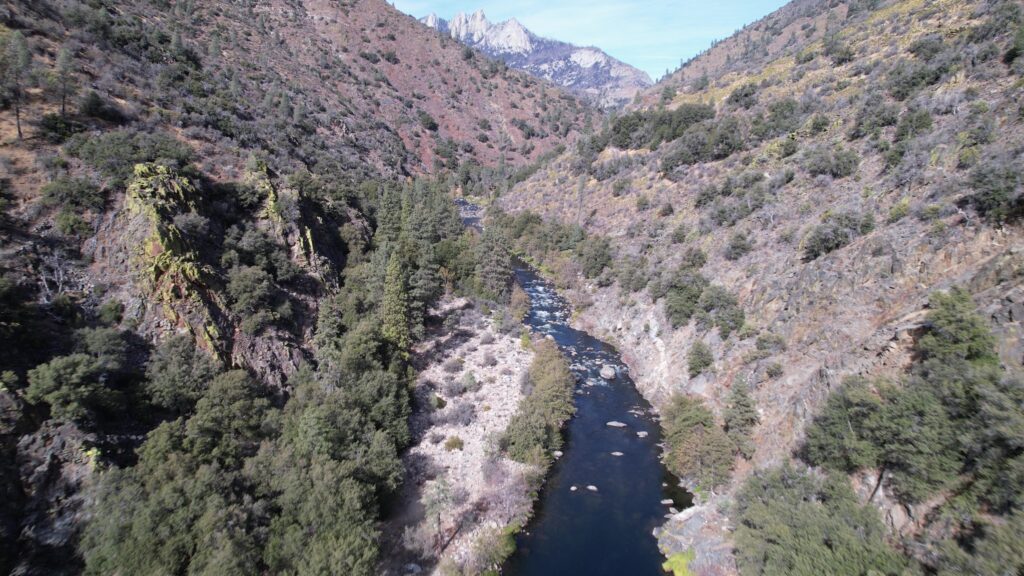
WILD NATIVES: THE THREE SPECIES OF GOLDEN TROUT
There are three unique species of golden trout native to the Kern River watershed. The California golden trout—the state fish, the Little Kern golden trout, and the “not so golden” Kern River rainbow. So, how did these unique subspecies of trout come to be? Thousands of years ago, a combination of plate tectonics, earthquakes, volcanic activity, and glaciation locked in the coastal rainbows and Sheepheaven redband trout and locked out the anadromous natives. That isolation caused the evolution of these three trout sub-species into specific areas: the Little Kern golden trout into the Little Kern River; the golden trout to the Golden Trout Wilderness area, specifically Volcano and Golden Trout Creeks; and the Kern River rainbow to the Upper Kern River.
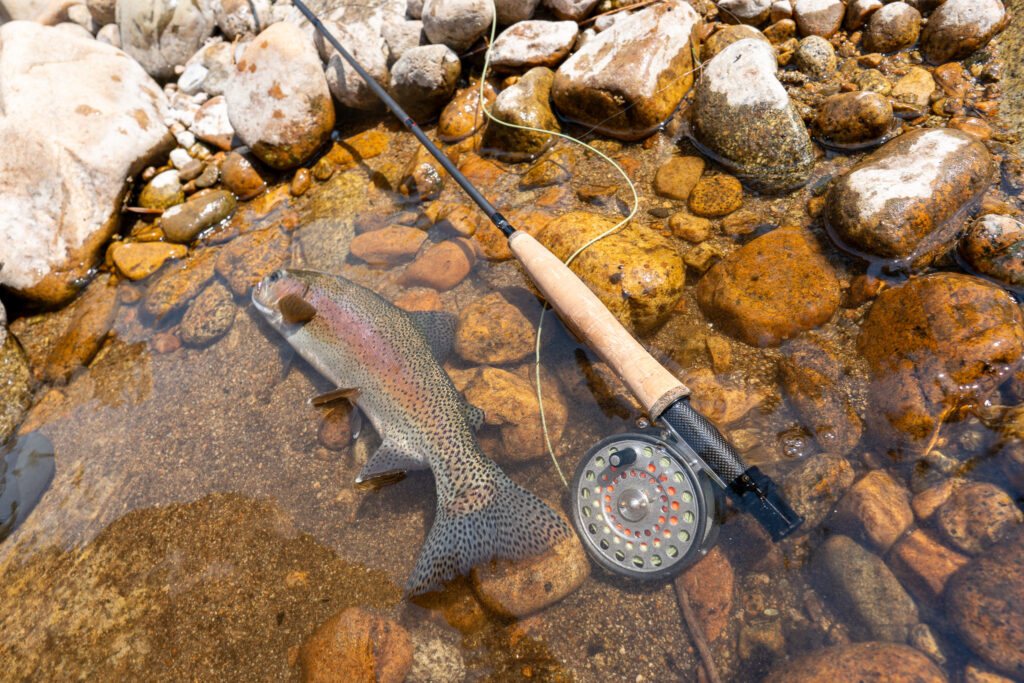
I have been lucky to fly fish all over the world. In my opinion, nothing fights harder and longer than a Kern River rainbow (KRR), and the wild section of the Kern River is dominated by them. They get big like anadromous steelhead, and they fight like steelhead too. They will run you up or down river into your backing if you don’t chase them. And chasing them on this wild river is often impossible. The results are not typically good when you try to slow them down with the reel. They jump more than any trout I have seen. I once had a big KRR jump towards the end of a fight, up 10 feet and over a tree branch and snap me off. They’ll fight you right to your feet, never giving up and continuing the fight while in the net. Even the most experienced fly fishers will tell you a 50% hook-to-landing ratio is good in the wild section of the Kern.
One difference between the Kern River rainbow and steelhead is that you can catch KRRs on dry flies—and with a good cast and drift, you can hook a lot of them. Thirty-plus fish days aren’t unusual for experienced anglers, and even beginners can fool fish here. I have caught KRRs to 24 inches, though some of the old timers claim they’ve seen fish pushing 30. The fly fishing on the wild section of the Kern is just fantastic. Why? There are plenty of reasons, but a major one is that these fish just don’t see many artificial flies. So if you get your cast in the right lane, with a good drift that matches the natural flow, you will get takes.
While DNA testing is the only way to identify a pure-strain Kern River rainbow, Steve Schalla of FlyFishingTheSierra.com, who is extremely knowledgeable about the area having hiked and fly fished more of the Sierra Nevada than any human I know, provides this guidance: “Short of the fight, the best way to identify a pure strain KRR is ‘head to toe spots’,” meaning small spots from the tip of the nose to the end of the tail both above and below the lateral line.
THE BAD NEWS
So, what’s the bad news? Well, you can’t drive to the wild section of the Kern River. There are no roads into California’s Golden Trout Wilderness—you have to earn it by hiking it.
My go-to spot on the Upper Kern River is the upper section above the confluence of the Little Kern River, known as the Forks of the Kern and accessed by a trail of the same name.
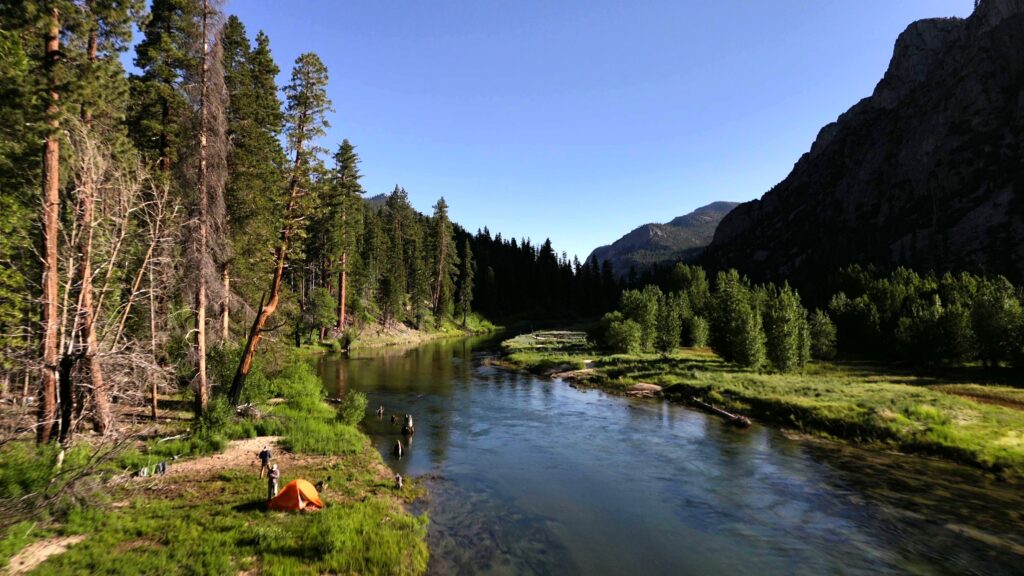
This section, while a wild and scenic river, is also a designated Heritage and Wild Trout Water by the California Department of Fish and Wildlife. In the first two miles of the Forks of the Kern Trail, you drop 1,100 feet as you descend into Kern Canyon. That’s not a big deal—until you have to hike back out. Doing so in the heat of summer, with 35+ pounds on your back and fully exposed to the sun, is no joke. Sure, there are folks who day hike it. But even when I was young and fit, climbing back out after fishing all day was tough. That’s why most fly fishers choose to backpack in and overnight it.
Once you reach the river, you’ll find yourself at the confluence of the Little Kern and the Main Fork of the Kern. And that’s your next challenge: The trail includes a river crossing of the Little Kern. From August through the season close on November 15th, that typically means a simple shuffle getting wet below the knees. But in spring, the crossing can be difficult—if not impossible—to do safely.
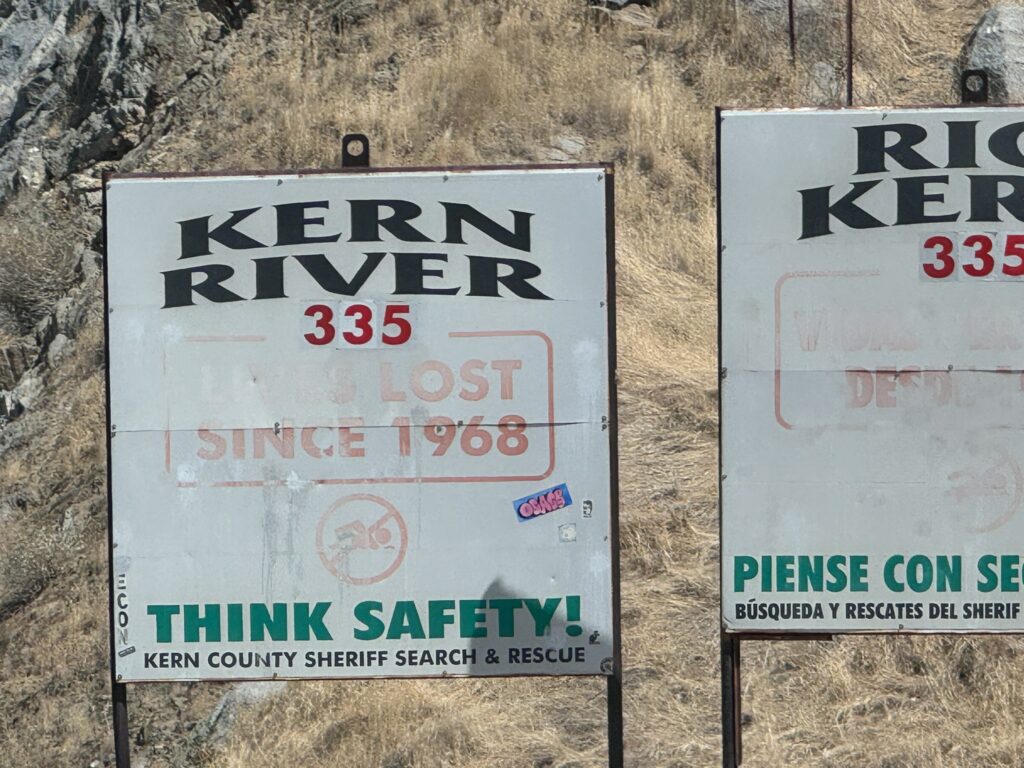
Keep in mind the Upper Kern can rage near 20,000 cfs during spring runoff and back all the way down below 150 cfs in the same year. At high flows, the Kern is a dangerous river. Since 1968, the Kern has claimed 342 lives, which has risen by seven since I started writing this article—and that number will continue to rise. This river demands respect.
BUGS
The altitude at the confluence is approximately 5,500 feet. Not only is this good news for the lungs, it also means grasshoppers. Lots of them. Multiple species of grasshoppers in a variety of colors flourish here. The KRRs can’t resist them. Grasshoppers appear in the early spring and last all the way through November. They get huge, too. How would you like to throw a size two hopper pattern? I tie a Huck hopper that big, just so I can use it on the Kern. Does that sound fun or what?! In that lull of the afternoon, you can fish a hopper-dropper providing all-day action.
The Kern is not known as a “buggy” river with prolific hatches. But that doesn’t mean it does not enjoy hatches. It does. Especially during the witching hour as the sun goes down. Springtime brings the big ‘ol salmon and skwalla flies and you just hope to get in there in time to enjoy them.
Mayflies – BWOs appear in abundance early summer and then again in the fall. Other mayflies like PMDs, March Browns, Little Yellow Mays, and Speckle-wings appear all throughout the fishing season.
Caddis – During the heart of the summer season, you’ll see many types of caddis, including the Spotted Sedge, Saddle Casemaker, Grannom, and my favorite to imitate, the Green Rock Worm.
Stoneflies – Late spring and summer bring a variety of stoneflies, with Goldens and Little Browns dominating the hatches.
Midges – According to Steve Schalla, there are over 45 genera of chironomids in California alone. And they are certainly prolific in the Kern.
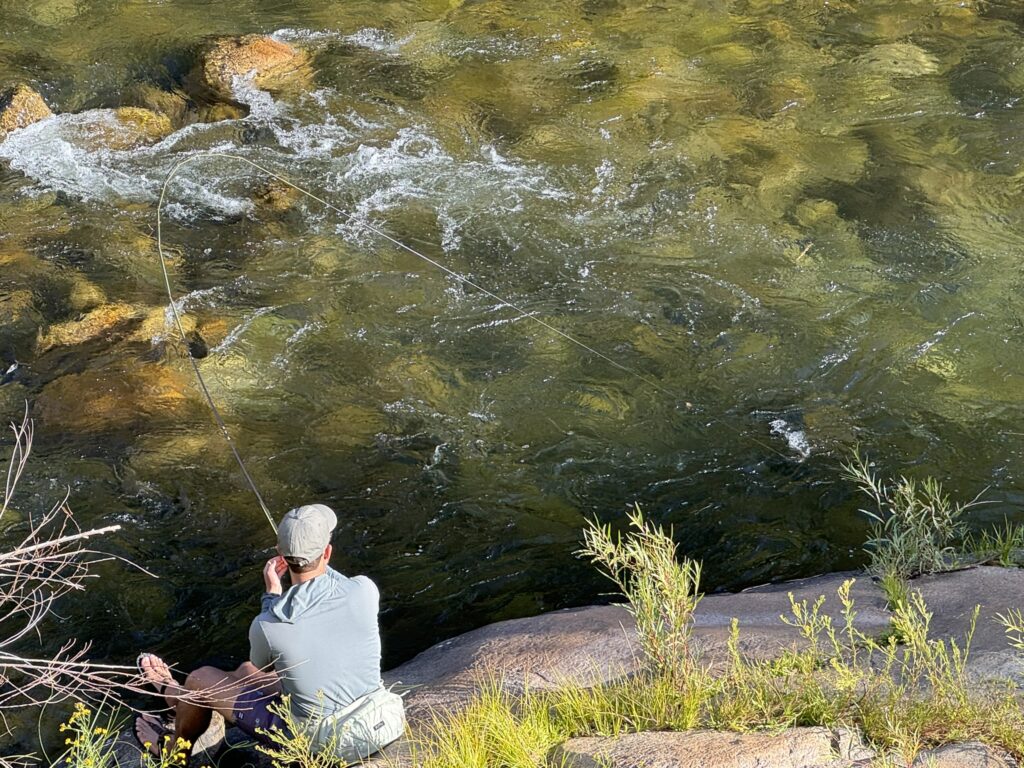
GEAR
I always bring a 6-weight for the hopper-dropper fishing and a 5-weight for small, dry-fly fishing. Those bigger rods are not to punch through the wind as much as to even up the battles with big wild Kern River rainbows. You can get away with a 3 or 4 weight, but it’s just going to take you that much longer to land them, with more risk of losing them. I once watched a Tenkara fisherman get his rod snapped in half. This is not a place for Tenkara. This is not a place for the experienced to throw the bobber either. There is no need.
Mid-day, when the top water action slows down and the fish retreat deep in the runs, I rig a hopper-dropper set up. I typically fish a 3X mono leader for three main reasons. First, KRRs are not leader shy. Second, the takes are vicious— lightning quick. I have a tendency to set too hard because it happens so quickly. I have learned the hard way about leaving my flies in a KRR’s face. Third, the Kern is a fly-eater—you just have to plan on losing a lot of flies here. It’s overgrown on the banks, and there are a ton of things like deadfall to catch your droppers in the river. I drop nymphs with fluorocarbon tippet.
TACTICS
Double-hopper fishing can be wildly productive for most of the summer and well into fall. I usually run a big hopper, like a size 2 or 4, with a smaller one—say a size 10 or 12—trailed about 12 inches behind. Even the smaller Kern River rainbows will try to get the huge size 4 Huck Hopper in their mouth. They’re so aggressive, in fact, they’ll often rise just to bite off a leg to drown the hopper. I thought I was just missing hook sets until I realized the legs were disappearing from my Huck Hoppers.
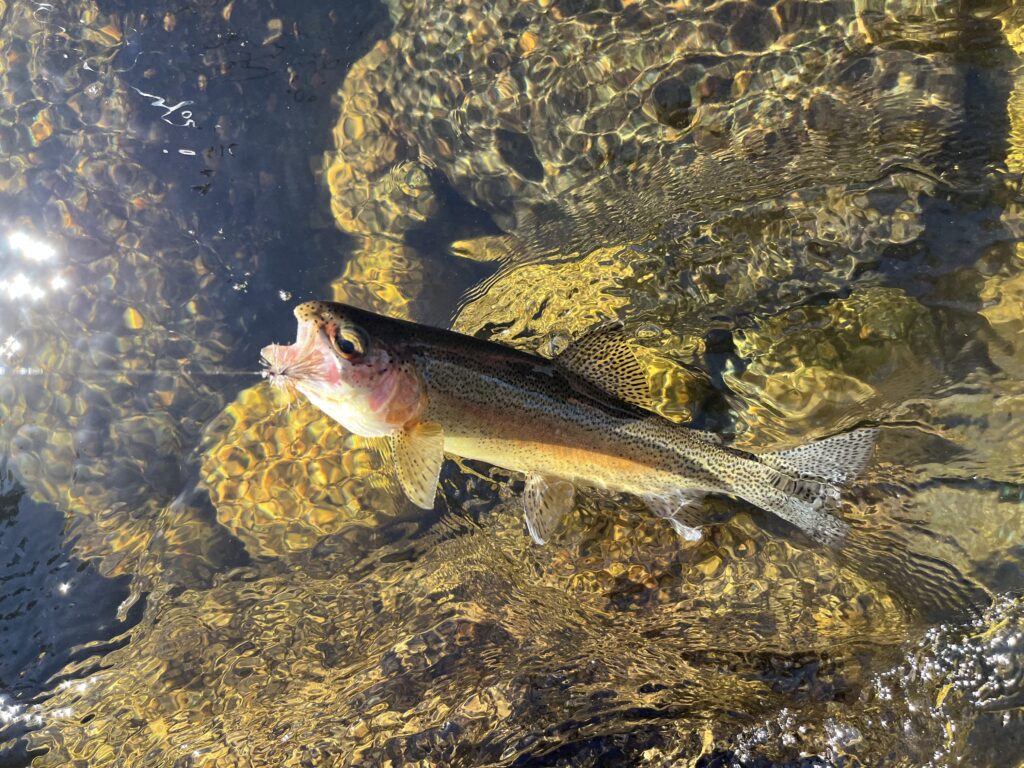
Often, I won’t see the midday lull and fish double hoppers all day. Then I’ll switch to a size 18—anything small—for the evening “witching hour.” This is a place where you can get takes on a hopper as the sun comes up. And at sunset? It barely matters what you throw—they’re on it. For me, a midday lull means I haven’t had a take on top for 20 minutes or so. When that happens, I switch to my typical hopper-dropper rig: a 7-foot 3X leader with a size 4 Huck Hopper on top, followed by 3-4 feet of 4X flouro tippet and a size 8 black Beldar stonefly nymph (or any stonefly nymph), then another 18 inches of 5X flouro tippet and a size 16 Huck Green Caddis Nymph Cripple.
Now, if you’re an experienced fly fisher, you may be saying to yourself: “That’s insane.” And it kind of is. But when the river warms, the fish head for the deep runs, and that rig gets down to them, while still inducing strikes on top. Overhead casting that rig is difficult. Roll casting is even harder. And those three tungsten beads in the stonefly don’t make it any easier. Even without wind, it’s barely manageable. That long, three-fly rig is not only difficult to cast, you also risk losing flies. But it’s deadly effective all season.
I usually lose flies in three ways:
- Hung up on the bottom – it’s a wild river with tons of structure.
- Wind – one gust mid-cast and you’re hung up in the bushes.
- Missed casts – When I try to hit a 2-inch window with a 40-foot cast because I know there is a big fish in there.
I lose a lot of flies. But I catch a lot of fish. I take the risk because it’s worth it. I can rig up again quickly. Yes, it’s frustrating. But in my opinion, if you want big rewards, you’ve got to take risks.
The Upper Kern is best fished standing in the river. Wet wading is the norm in summer, but in spring and fall, you’ll need waders. You only make the mistake of leaving them behind once. A few years ago, I decided to lighten my backpack by leaving my waders behind and wet-wading in mid-November. The fishing was so good I couldn’t pull myself out of the river, but when I finally did, my legs were numb and I could barely walk.
Wading boots are a must because of the slick, polished granite that dominates the riverbed. Even in lower flows, some spots are too fast or deep to wade. Roll casts, side casts, and reach casts are essential to success. There are spots to teach beginners, especially in low flows. But in higher flows, success usually belongs to the experienced.
Can you throw a streamer here? Absolutely. There are numerous deep pools and runs. One time, a KRR hit my streamer so hard it ripped the rod right out of my hands. I literally had to chase it downstream. But honestly, the dry fly fishing is usually so good on the Upper Kern that I very rarely strip a streamer. That said, throwing mouse patterns at night is a hoot of fun here.
Flashy attractor nymphs will do well in sunny, crystal-clear conditions. I tie most of mine in a “cripple” format—with a pronounced holographic wing case and stunted wings. I know it sounds weird: a nymph with a crippled wing case and wings. But, over the years, I have modified these flies to the point where they just work. My theory? Predators prey on the weak and crippled. Perdigon-style flies also do well here because they get down into the Kern’s deep, fast runs in a hurry.
Generally, the farther upriver you go, the better the fishing. The first two miles above the confluence gets the most pressure, but even that’s not much. And don’t overlook the stretch downstream of the confluence. It rarely gets fished, partly because there’s no trail. It’s a bushwhack that requires some river crossings, but the rewards can be just as good.
RIVER FLOW
I’ll go to my grave arguing that the single most important factor in successfully fly fishing the Upper Kern River is flow. Not the moon, not the barometer, not even the season—just flow. The Upper Kern fishes best at low flow. I typically don’t fish it until the river drops below 500 cfs, which usually means waiting until the end of July.
At 250 cfs, there are plenty of places where you can safely wade. Below 150 cfs—what you’d see in a drought year—there are multiple places to cross and not a lot of places for KRRs to hide from a good cast and drift.
You can monitor flows on the Upper Kern on the Dreamflows site.
Looking at the 5-year annual view, you can see that the river typically doesn’t drop to fishable levels until late July. Hot Tip: The Kern is a tough river to cross, which means the far side, without a trail, rarely gets fished. If you can cross safely and are comfortable casting from the “left-handed side” of the river, you will be able to hit holding water that’s impossible to reach from river right. These are spots that rarely get fished.
Fly fishing the upper Kern River is not for the faint of heart, but the rewards are more than worth the effort.
The journey may leave you breathless with your heart pumping, but the experience will be unforgettable. This area of the Golden Trout Wilderness is stunning, the solitude is unmatched, and the river sees little fishing pressure. The three subspecies of golden trout are as unique as the setting itself. I truly hope you get the chance to feel the same joy and connection to this place that I’ve been lucky enough to experience over many years.
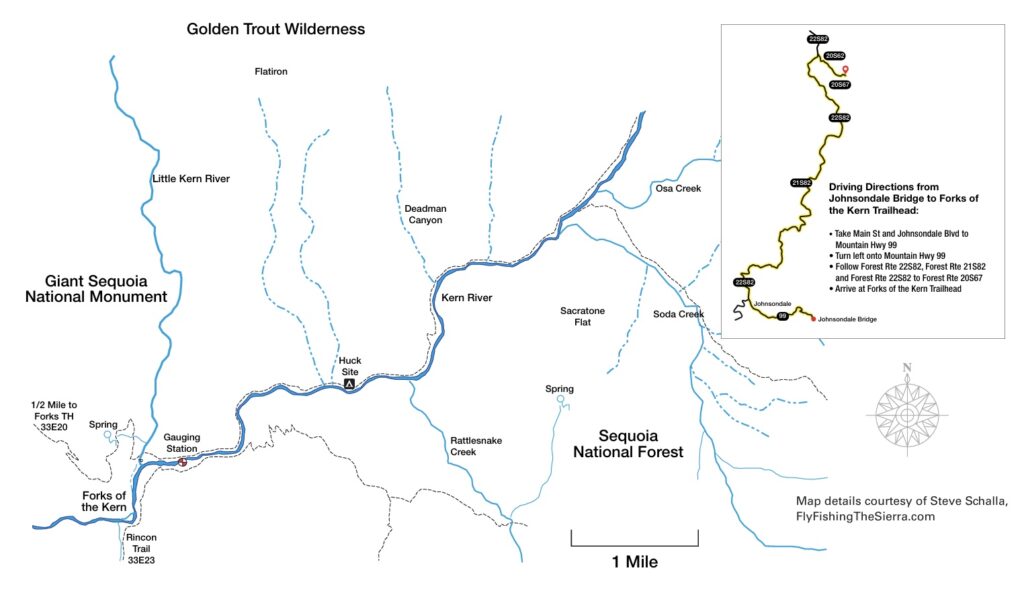
Forks of Kern | Quick Guide
Trailhead and Camping
The Forks of the Kern Trailhead is a 1-hour drive north from Kernville. Although 4WD is not required, the turn off to the trailhead from the road (22S82) is ~2 miles of dirt road and consequently subject to weather. There is a large dirt parking lot near the trailhead with a pit toilet nearby and a few primitive campsites.
The Forest Service has a number of dispersed camping sites within 15 miles of the trailhead on Forest Route 22S82. Lower Peppermint Creek Campground is 10 miles from the Forks Trailhead with water and pit toilets.
Reserve sites at Recreation.gov.
Access Maps
The Southern Sierra Region 1 map from FlyFishingTheSierra.com details fishing access points and landmarks on waterproof and tear-resistant paper.
Seasons
The season typically spans the last weekend in April to November 15th. The opening is dependent on the Forest Service’s ability to clear the road—plowing snow, clearing rocks, and removing deadfall. The season closing is dependent on the weather.
Permits, Licenses, and Regulations
Along with a California fishing license, a Golden Trout Wilderness Permit is required to access this magical place. They are free. The Forks trail is not subject to trail quotas like the more famous trails in the Sierra Nevada.
You can find the details and the application for the GTW permit on the Forest Service website.
There are many ways to apply for your GTW permit, including in person. But, I have found the easiest way is by email:
Email your completed permit application to Sequoia National Forest. The Forest Service Visitor Center Staff monitors this email address Monday-Friday, 8:00 a.m. – 4:30 p.m. They will return your completed permit within a week. The Forest Service will also advise you of road closures, fires, and fire permit bans. They can be reached at (559)-539-2607.
You’ll also need a California Fire Permit, even if you are only going to use a small backpacking stove. The fire permit is free and easy to obtain online after a simple common-sense test at ReadyForWildfire.org.
Heads up: In high fire-danger periods, which are common to this area, the Forest Service will suspend fire permits. This will prevent you from having campfires or even using a backpacking stove.
Fishing regulations for California are complex and dynamic. It’s always best to check them for yourself at this link.
The rules for the wild section of the Upper Kern are straightforward: Flies: only single-hook artificial lures (flies) with barbless hooks may be used. Take: two trout maximum per day. Maximum size limit: 10 inches total length for trout only.
Huck Flies
You can purchase all the flies mentioned in this article, including Upper Kern River combination specials at TimHuckaby.com/shop. If you want to tie the Huck Hopper yourself, watch the video below.
Fly Shop
For all your angling needs, stop in Kern River Fly Shop. The friendly staff will get you well-equipped for your trip. 11301 Kernville Rd, Kernville, 760-376-2040. Open 8 a.m. – 5 p.m. every day.
Tim is a longtime software industry leader and keynote speaker with 25+ years working for or with Microsoft. When not on stage, he guides fly fishers in California’s Golden Trout Wilderness, San Diego, and Baja. Known for storytelling, teaching, and conservation, Tim brings passion and expertise to every outdoor adventure. TimHuckaby.com
Easier Options for Experiencing the Kern
Ok, forget everything I just said about how hard it is to get to the wild section of the Kern. There are two exceptions that make fishing the Upper Kern dramatically easier.
Peppermint Falls Ranch
You can drive to within a short hike of the river while staying in relative luxury at the same time. It’s called Peppermint Falls Ranch (PFR). This 5-mile by 5-mile swath of land, which includes two full miles of Peppermint Creek teeming with wild trout and waterfalls, is privately owned. It has been developed with cabins on site and a private paved road that gets within striking distance of the river—a 20-minute hike on a well-groomed trail down to the river. The ranch opened after a huge amount of renovation in the spring of 2025. It is located in the wild section of the Upper Kern River about 10 miles downstream from the confluence of the Kern and the Little Kern Rivers.
There are huge stretches of the wild section of the Kern River I have yet to get to. In November of 2024, the good folks at PFR invited me to the property. While there, I fished the wild section of the Kern in the canyon at the end of the season. A stretch that has rarely been fished … ever. And oh man, did I stick ‘em. I fished a stretch of the Kern that I have been trying to get to, and failed, for over 20 years. The short hike to the river meant I didn’t have to carry a backpack—and I slept in bed at night! You can even day trip in a helicopter right from PFR to the upper reaches of the Kern to fly fish.
Peppermint Falls Ranch is a wonderful way to experience the Upper Kern River. I encourage you to check it out. And if you do, I’d be happy to guide you!
PeppermintFallsRanch.com | 760-549-9976
Golden Trout Wilderness Packtrains
Another alternative is Golden Trout Wilderness Packtrain. This is the modality for the adventurous fly fisher who still wants to sleep in a tent on the upper reaches of the Kern River, but doesn’t want to hike in all the required gear. Or hike at all. You can have a mule train carry all your gear for you. You can choose to hike in or ride a horse. But the beautiful thing is the amount of gear that can be loaded onto the mules. That could mean coolers with steaks, beer, and ice for margaritas. I love these guys so much. Full disclosure, I guide for them too. Let’s go!
GoldenTroutPackTrains.com | 559-542-2816



